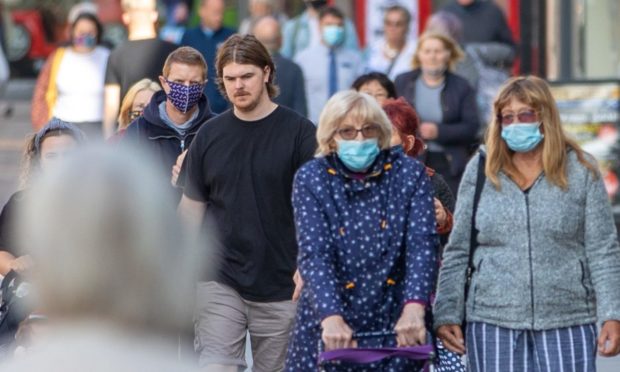New maps of Covid hotspots across Tayside and Fife show Dundee continues to have the highest rate of coronavirus across the country.
In Dundee, 68 new positive results were reported on Wednesday, alongside 1,129 new cases across Scotland.
One further death was also reported in Scotland, taking the death toll amongst people who recently tested positive to 7,684.
Hospital patients currently receiving treatment in hospital for coronavirus reached 133, with 15 in intensive care.
The Scottish Government also confirmed 3.5 million people had received their first coronavirus vaccine, with 2.4 million adults now vaccinated with two doses.
It comes after Nicola Sturgeon said it was unlikely Scotland would move to Level 0 next week as planned.
Dundee
Dundee is the local authority with the most cases per 100,000 people in Scotland, with an infection rate of 318.
Across Scotland the average case rate is 119.
In the seven days leading up to June 13, the area had 476 cases of the virus identified.
The city became the most infected local authority in Scotland last week.
Several neighbourhoods across Dundee have recorded some of the highest case rates in the country.
Douglas East and Craigie were behind only Galashiels, in the Scottish Borders, based on the number of cases proportionate to population.
Craigie recorded 673 cases per 100,000 in the week leading up to June 13, whilst Douglas East recorded a rate of 687.
In total there are 10 areas of the city recording over 400 cases per 100,000, the highest alert level for case rate.
This includes Ardler, Balgay, Baxter Park, Caird Park, Charleston, Craigie, Douglas East, Lochee, Stobswell and the Glens.
Angus
Case rates in Angus have continued to fall, after a cluster of cases in Kirriemuir saw it become the most infected neighbourhood in Scotland earlier this month.
Eight new positive results were reported on Wednesday.
In the week leading up to June 13, Angus recorded a case rate of 138 per 100,000, down from 166 on June 6.
Eight neighbourhoods in Angus have recorded infection rates between 200 and 399, the second highest alert level.
This includes Arbroath Harbour, which had 10 positive cases and a seven-day infection rate of 214.
Perth and Kinross
Three areas of Perth and Kinross have seen infection rates rise to over 400 per 100,000, including Letham.
There were 28 confirmed cases of the virus were reported on Wednesday.
Positive case rates in Perth and Kinross reached 230 in the week leading up to June 13, giving it a case rate of 151.
Central and South Inch, Hillyend and Letham are listed as potential hotspots, with Central and South Inch recording a case rate of 468.
Fife Covid hotspots
Fife continues to have a coronavirus case rate nearly half the Scottish average, with the region recording 64 cases per 100,000 people.
Fifty infections were reported by Public Health Scotland in their latest update on June 16.
No neighbourhoods in Fife have recorded a case rate above 400, and six have recorded rates of between 200 and 399.
In the week leading up to June 13, 240 new cases were reported according to the latest data.
